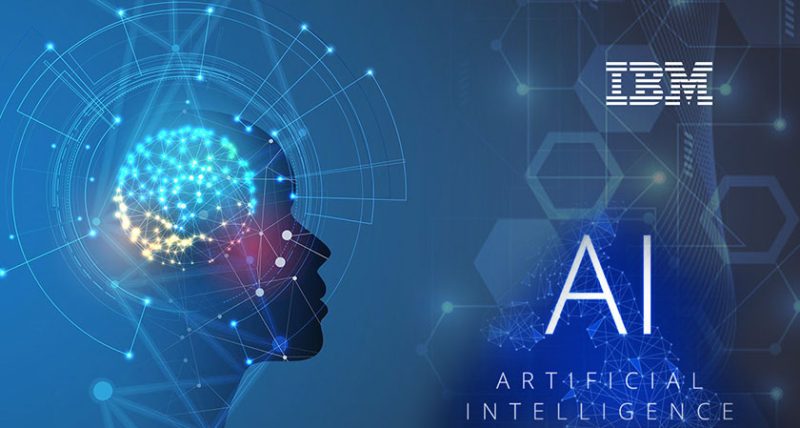The AI Revolution: IBM Solutions For The Present And Future of Businesses

Categories :
The global artificial intelligence market has evolved from a futuristic concept to a transformative tool, sizing from $428.00 billion in 2022 to a projected growth of $2,025.12 billion by 2030. Brendan Buckingham, Business Development Leader for Data and AI at IBM UKI, explains how AI solutions from IBM are creating benchmarks in multiple sectors of business.
The continuous research and innovation directed by tech giants are driving the adoption of advanced technologies in industry verticals, such as automotive, healthcare, retail, finance, and manufacturing. IBM is at the leading edge of this innovation with its unique AI solutions, powered by its Watsonx platform. Elaborating IBM’s vision of AI and its applications, the Business Development Leader for Data and AI at IBM UKI, Brendan Buckingham said in a recent interview with Dinis Guarda for his YouTube podcast:
“IBM’s intense focus is on AI. Not just AI for AI’s sake, but the AI that can be used in an enterprise to really achieve its RoI or to enhance a way an enterprise works. We are trying to take this to a level beyond the base model and really see how to deploy AI at scale.”
Speaking about the IBM Think London 2023, to take place on October 10, Brendan said that the event is an opportunity to bring all the stakeholders together and enhance the overall AI experience for enterprises and organisations.
“It’s not just the sessions that are interesting for the customers attending this event, but the ability to talk to each other and to other experts”, he says.
Watsonx, an AI for business solution by IBM, is enabling organisations to harness the power of AI to streamline processes, make data-driven decisions, and enhance customer experiences. Its use cases and potential applications will also be discussed at the Think IBM London 2023 event.
AI in sports
AI has made significant inroads in the world of sports, revolutionising various aspects of the industry, from athlete performance analysis and injury prevention to fan engagement and sports broadcasting.
Experts from IBM iX, the experience design partner within IBM Consulting, worked with The All England Club to leverage foundation models from watsonx, IBM's enterprise AI and data platform, to train the AI in the unique language of tennis at Wimbledon 2023. Generative AI built on these foundation models was applied to produce narration with varied sentence structure and vocabulary to make the clips informative and engaging.
Another new feature that IBM introduced was the IBM AI Draw Analysis, which uses AI to define how favourable the path to the final might be for each player in the singles draw. A player's draw favorability was indicated with a rating along a scale, based on factors including the player's match-ups against potential future opponents and how the player's position in the draw compares to competitors. This new insight inspired more debate and engagement in the fan community.
AI for human resources
These AI interfaces from IBM are designed to empower HR professionals to focus on the human aspect of their roles while improving the overall employee experience and saving valuable time. In a landscape where employees and managers often need to access various HR applications through different channels, IBM's Watsonx Assistant utilises natural language understanding (NLU) to provide easy access to HR policies and automate frequently requested tasks.
“It’s a very transformative use case at a very real level. It talks about our focus: outcomes that transform organizations”, said Brendon.
This conversational AI can be tailored to an organisation's needs and integrated seamlessly with your existing technology stack, reducing employee frustration, enhancing engagement, and relieving HR teams of operational burdens. By streamlining HR processes and offering real-time assistance, AI interfaces like Watsonx Assistant help prevent staff burnout, improve employee satisfaction, and allow HR professionals to focus on delivering personalised and human-centric HR services.
“The way we augment our solutions for customers really proves that we’re not just a tech company; we are prepared to invest in how customers can crystallise their outcomes and deliver and illustrate value to them”, he adds.
AI for geospatial science data
AI has emerged as a pivotal tool in the field of geospatial science, enabling researchers and professionals to extract valuable insights and patterns from vast volumes of geospatial data and imagery.
IBM and open-source AI platform Hugging Face released of IBM's watsonx.ai geospatial foundation model, which is constructed using NASA's satellite data and will be openly accessible on Hugging Face.
IBM also collaborated with NASA's Marshall Space Flight Center to use IBM's artificial intelligence (AI) technology to discover new insights in NASA's massive trove of Earth and geospatial science data.
The project allows users, says Brendan, “to choose models and take a deeper look at issues like climate change. The model that we selected proved to be 50% more effective than any other model in the space, utilising only half of the tokens to generate it.
This is a great collaborative example of very advanced innovations that’s coming out of that research team.”
AI for Financial Services
Financial institutions like WestBank and ABN AMRO have also embraced AI to streamline operations and improve decision-making. AI algorithms analyse vast amounts of financial data to detect fraud, assess credit risk, and optimise investment portfolios. IBM's Watson, with its natural language processing capabilities, has been instrumental in developing AI solutions for financial services. These AI systems not only enhance security but also provide financial professionals with valuable insights into market trends and customer behaviour.
“Each case is different, each set of circumstances is different, and the components of people already placed are different. We are in an era where we have to find out ways of augmenting what is available to us to help you achieve your goals. This is our technical engineering approach in many cases”, said Brendan.
The future trajectory of research and innovation in AI
The latest research and innovation in the field of AI, Brendan said, is focussed to remove biases that have historically plagued traditional AI models. Recognizing that these biases can perpetuate discrimination and inequality, researchers and innovators are working to develop AI systems that are more equitable and unbiased.
Through advanced algorithms, ethical guidelines, and comprehensive training data, the goal is to create AI technologies that treat all individuals and groups fairly, irrespective of their demographic characteristics.
He also introduced the fresh perspective of creation of systems with persona. These systems are designed to interact with users in a more human-like manner, tailoring responses and actions based on individual preferences and personality traits. This personalised approach to AI not only enhances user experiences but also opens up new possibilities in areas like virtual assistants, customer service, and content recommendation.
However, as persona-based AI systems become more sophisticated, it becomes crucial to implement robust governance and ethics frameworks to ensure responsible AI development and deployment.
“There is so much we can do to enhance our understanding of how models are working or govern them. The better the understanding of AI and the existing processes when they are brought together, the better the innovation in that area. We are only at the beginning of that”, concluded Brendan.

With a driving passion to create a relatable content, Pallavi progressed from writing as a freelancer to full-time professional. Science, innovation, technology, economics are very few (but not limiting) fields she zealous about. Reading, writing, and teaching are the other activities she loves to get involved beyond content writing for intelligenthq.com, citiesabc.com, and openbusinesscouncil.org








